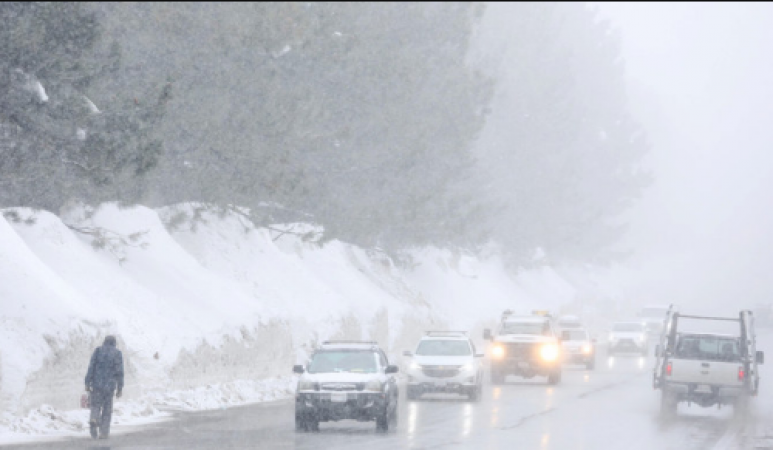
California: Tuesday saw the push of a strong weather system from the Gulf of Alaska into Northern California, adding to the state's months-long deluge of storms with additional wind, rain, and snow.
Highway chain requirements went into effect, a backcountry avalanche warning was issued for the greater Lake Tahoe region, and forecasters warned of heavy snow in the Sierra Nevada and coastal mountains, where accumulations of up to 4 feet (1.2 metres) were possible.
The storm was predicted by the National Weather Service to bring a plume of Pacific moisture into California as it moved south, but the storm's rainfall was not predicted to be as heavy as recent atmospheric rivers that hit the state.
Also Read: Panama has issued a warning to migrants crossing the 'deadly jungle.'
The water content of California's Sierra Nevada snowpack is more than double normal overall and nearly triple in the southern Sierra after a dozen previous atmospheric rivers and blizzards fueled by arctic air.
Buildings have been crushed by snow, communities and farm fields have been flooded, and homes have been in danger from landslides since the onslaught started in late December.
Also Read: Dozens of migrants are believed to have been killed at a Mexican border detention facility
A historic pier in Santa Cruz County that was in danger of collapsing was demolished by workers on Monday. Big surf in January severely harmed the 500-foot-long (152-meter) wooden pier at Seacliff State Beach. The SS Palo Alto, also known as the "cement ship," was a World War I-era steamship that was grounded. The pier, built in 1930, connected the beach to it.
The storms have brought much-needed water, so that is a plus. After being significantly depleted, the two biggest reservoirs in the state, Shasta and Oroville, have risen above their historical averages to this point.
Cities and farmers who depend on the Central Valley Project, the water system that is under federal management, saw a significant increase in their allocations on Tuesday.
The US Bureau of Reclamation announces each February how much of those contracts can be filled, updating as conditions change. Each year, more than 250 organisations, mostly irrigation districts, contract with the federal government for specific amounts of water.
Many CVP irrigation water suppliers will see their available supply increase from as little as 35% of their contracted total to 80% as a result of the storm's increased supply. According to the bureau, suppliers for commercial and industrial uses will now be permitted 100% of their historical use rather than just 75%.
The massive Diamond Valley Lake in Southern California, a reservoir that had been depleted to 60% of capacity after three years of drought, is being filled by water being brought in from the north by the Metropolitan Water District. By the end of the year, it ought to be full once more.
The MWD General Manager Adel Hagekhalil said, "Nature gave us a lifeline," as officials observed water pouring into the reservoir on Monday.